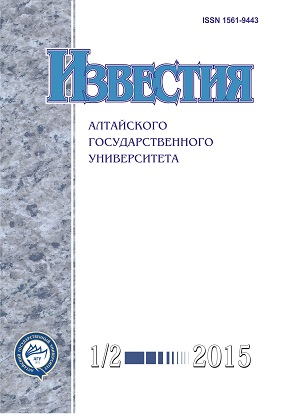New Data about Middle Paleolith of Dagestan (Based on the Site Darvagchay-Pit-2)
DOI:
https://doi.org/10.14258/izvasu(2015)1.2-36Keywords:
North-East Caucasus, Middle Paleolithic, Levallois knapping, NeopleistoceneAbstract
This article is devoted to the research of the Middle Paleolithic lifting complexes from the new monument Darvagchay-Pit-2, the materials of which relate to the final stage of Middle Paleolith and complements the factual material of cultural and chronological range in the North-East Caucasus. Stone tools are characterized by the Levallois technique of splitting and typical Middle Paleolithic toolkit. Dominated by medium-sized products, artifacts made of monotonous raw materials have the same degree of preservation of the surface and made in the same technical tradition. The technical and typological characteristics of the material allow one to correlate the obtained material with previously known stratified complexes dating to Middle Paleolith: Darvagchay-Bay-1 and Tinit-1. These studies of the Middle period allow researchers to approach to solving the problem of the emergence and development of a human of modern physical type. It makes possible not only to reconstruct the cultural-historical process in the area in the Pleistocene, but to solve the problems of the contents and adjustments the boundaries of cultural and historical Paleolithic eras of the Caucasus and the Aral-Caspian basin as a whole.
DOI 10.14258/izvasu(2015)4.1-21
Downloads
References
Деревянко А.П., Амирханов Х.А., Зенин В.Н., Анойкин А.А., Рыбалко А.Г. Проблемы палеолита Дагестана. -Новосибирск, 2012.
2
Деревянко А.П., Зенин В.Н., Рыбалко А.Г., Колташов М.С. Полевые исследования памятника Дарвагчай-залив 1 (Республика Дагестан) в 2010 г. // Проблемы археологии, этнографии, антропологии Сибири и сопредельных территорий. - Т. XVI. - Новосибирск, 2010.
3
Деревянко А.П., Зенин В.Н., Рыбалко А.Г., Лещинский С.В., Зенин И.В. Дарвагчай-Залив-1 - новый многослойный памятник в Южном Дагестане // Проблемы археологии, этнографии, антропологии Сибири и сопредельных территорий. - Т. XV. - Новосибирск, 2009.
4
Деревянко А.П., Амирханов Х.А., Зенин В.Н., Аной-кин А.А. Первые находки ашельских рубил в Дагестане // Проблемы археологии, этнографии, антропологии Сибири и сопредельных территорий. - Т. XI. - Новосибирск, 2005.
5
Голубятников В.Д. Морские и речные террасы Дагестана // Ассоциация по изучению четвертичного периода Европы. - Вып. III. - М., 1937.
6
Анойкин А.А., Славинский В.С., Рудая Н.А., Рыбалко А.Г. Новые данные об индустриях рубежа среднего-верхнего палеолита на территории Дагестана // Археология, этнография и антропология Евразии. - № 2. - Новосибирск, 2013.
Downloads
Issue
Section
License
Izvestiya of Altai State University is a golden publisher, as we allow self-archiving, but most importantly we are fully transparent about your rights.
Authors may present and discuss their findings ahead of publication: at biological or scientific conferences, on preprint servers, in public databases, and in blogs, wikis, tweets, and other informal communication channels.
Izvestiya of Altai State University allows authors to deposit manuscripts (currently under review or those for intended submission to Izvestiya of Altai State University) in non-commercial, pre-print servers such as ArXiv.
Authors who publish with this journal agree to the following terms:
- Authors retain copyright and grant the journal right of first publication with the work simultaneously licensed under a Creative Commons Attribution License (CC BY 4.0) that allows others to share the work with an acknowledgement of the work's authorship and initial publication in this journal.
- Authors are able to enter into separate, additional contractual arrangements for the non-exclusive distribution of the journal's published version of the work (e.g., post it to an institutional repository or publish it in a book), with an acknowledgement of its initial publication in this journal.
- Authors are permitted and encouraged to post their work online (e.g., in institutional repositories or on their website) prior to and during the submission process, as it can lead to productive exchanges, as well as earlier and greater citation of published work (See The Effect of Open Access).








